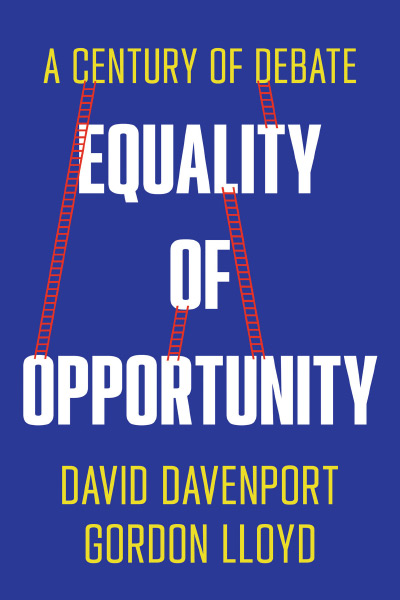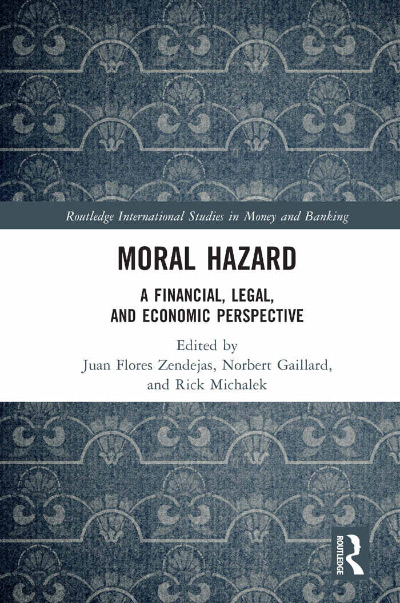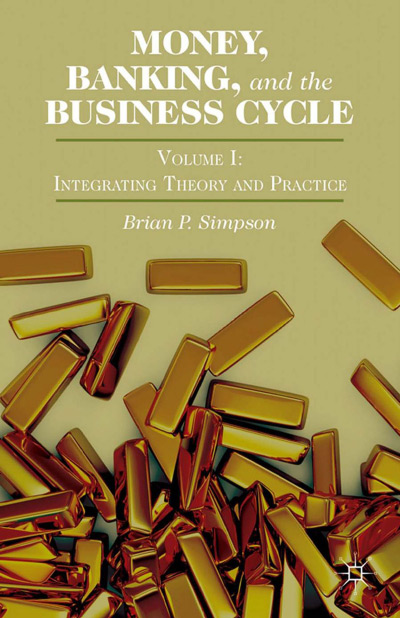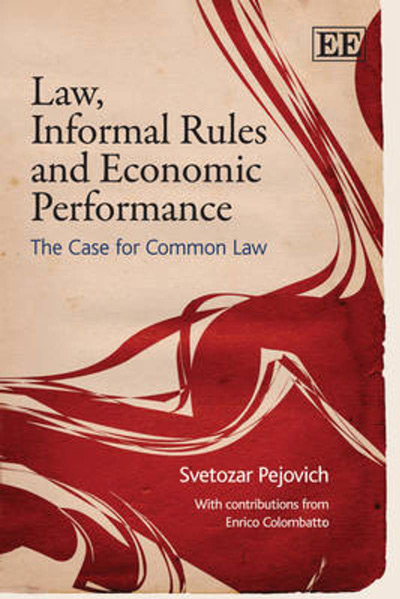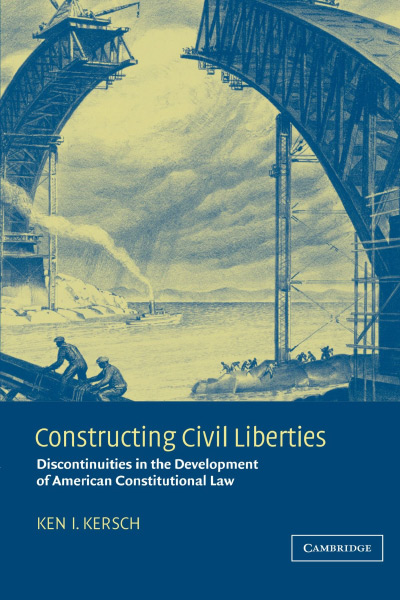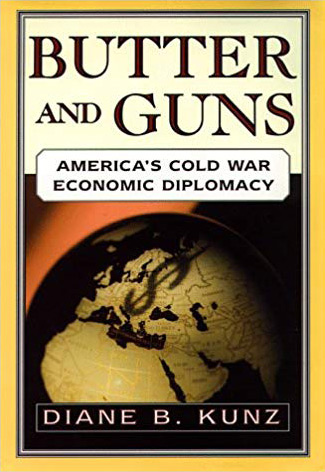The constitutional history of the twentieth century has long been dominated by the narrative of President Franklin D. Roosevelt’s Court-packing plan and the so-called constitutional revolution of 1937. This tale is commonly presented as a sort of Victorian melodrama. Briefly stated, the conventional account holds that a dastardly Supreme Court, dominated by justices who were either adherents of outmoded constitutional doctrines or simply handmaidens of the business community, frustrated the efforts of the New Dealers to enact a beneficent program of needed reforms. Eventually this judicial intransigence provoked a constitutional crisis and led to the Court-packing proposal. Politically isolated and under tremendous external pressure to bow to the popular will, the majority of the Court eventually came to accept the huge expansion of governmental authority implicit in the New Deal. The New Deal, then, stood as a watershed in the formation of modern constitutionalism, which viewed constitutional law as just an outgrowth of public policy and saw judges primarily as political actors. Scholars intellectually and emotionally committed to the New Deal and the welfare state fashioned this prevailing account of triumphant New Deal constitutionalism, and they disparaged the justices who in the 1930s resisted fundamental changes in constitutional thinking.
With the disintegration of the New Deal consensus, which dominated the academy until the end of the twentieth century, revisionist scholars have begun to challenge the account of constitutional history espoused by Progressives and New Dealers. Some scholars have stressed the glaring differences between enlarged governmental power under the New Deal and the structure of limited government envisioned by framers of the Constitution. The salient goals of this scholarship have been to highlight the discontinuity between the New Deal and traditional constitutional jurisprudence, and to question the very legitimacy of the New Deal (see Richard A. Epstein, Takings: Private Property and the Power of Eminent Domain [Cambridge, Mass.: Harvard University Press, 1985], p. 281). Other scholars have endeavored to revise the standard account to recognize the complexity of the New Deal era. Barry Cushman, for example, has argued that the doctrinal changes associated with the New Deal were under way well before 1937 and had little to do with the Court-packing proposal (see Rethinking the New Deal Court: The Structure of a Constitutional Revolution [New York: Oxford University Press, 1998]). Nonetheless, the conventional account of the Court-packing episode as a defining moment in constitutional history has proven remarkably durable (see William E. Leuchtenburg, The Supreme Court Reborn: The Constitutional Revolution in the Age of Roosevelt [New York: Oxford University Press, 1995]).
In his rewarding book The Constitution and the New Deal, G. Edward White takes a penetrating look at the conventional account of New Deal constitutionalism and concludes that it needs to be substantially revamped. He maintains that the transformation of constitutional law in the twentieth century was part of a more basic shift in thinking about the nature of law and that it cannot be explained in terms of a single dramatic event such as the Court-packing plan. He emphasizes that doctrinal change was gradual and that it started long before the political victory of the New Deal. For example, he points out that judicial recognition of broad federal- and executive-branch power to conduct foreign policy and override inconsistent state laws occurred early in the century. Similarly, the Supreme Court was generally receptive to the growth of administrative agencies and became more protective of free speech before 1930. In particular, White contends that the notion of a malleable “living constitution” gained currency in the 1920s, slowly eclipsing the understanding of the Constitution as embodying fundamental principles. By the advent of the New Deal, in other words, a sea change in thinking about the role of judges in constitutional adjudication had already occurred.
According to White, the entire New Deal experience should be deemphasized as a formative chapter in the evolution of modern constitutional theories. He therefore presents the Court-packing plan as “a symptom, rather than a cause, of an early twentieth-century revolution in constitutional jurisprudence” (p. 237). He regards the conventional narrative of the New Deal’s supposed impact on jurisprudence as “an exercise in ‘winners’ history’” (p. 308).
White has unquestionably offered a far more nuanced and compelling examination of the relationship between New Deal and constitutional development than that provided by standard accounts. He has moved beyond the tired narrative of “good” liberals victorious over “bad” conservatives. His work raises a number of issues well worth exploring. One of the most interesting aspects of the book is his dissection of the tendency to assign ideological labels to justices in line with their support or lack of support for enlarged governmental power. Thus, Oliver Wendell Holmes and Louis D. Brandeis have been elevated to a pantheon of judicial demigods. On the other hand, justices perceived as hostile to the New Deal—specifically Willis Van Devanter, James McReynolds, George Sutherland, and Pierce Butler—have been systematically denigrated as the Four Horsemen. As White demonstrates, there is ample room to doubt the accuracy of these oft-repeated characterizations. They rest on a narrow and selective range of cases, and they fail to take account of any individual justice’s entire record. The image of Holmes as a “progressive” judge, for instance, is highly suspect. Skeptical about the efficacy of government regulations, disinterested in the plight of racial minorities and injured workers, and an enthusiast for eugenics, Holmes would hardly qualify as a modern liberal.
By the same token, White suggests that it is time for a reevaluation of the jurisprudence of the justices once stigmatized as the Four Horsemen. He points out that these four justices did not always vote as a bloc, upheld a number of New Deal regulatory measures, and were often protective of civil liberties. Moreover, other justices, including Brandeis, sometimes voted to invalidate New Deal legislation. However inaccurate the image of Van Devanter, McReynolds, Sutherland, and Butler fashioned by New Dealers, it nonetheless has long marked their place in history. Too many historians unthinkingly continue to spout a line that presents a skewed appraisal of these justices and their commitment to economic liberty.
The Four Horsemen are overdue for a more balanced historical assessment. Recent works have provided a fresh and more positive look at the judicial career of George Sutherland (see Hadley Arkes, The Return of George Sutherland: Restoring a Jurisprudence of Natural Rights [Princeton, N.J.: Princeton University Press, 1994], and Samuel R. Olken, “Justice George Sutherland and Economic Liberty: Constitutional Conservatism and the Problem of Factions,” William and Mary Bill of Rights Journal 6 [winter 1997]: 1–88). There is also a well-researched revisionist study of the curmudgeonly Justice James C. McReynolds, who has been particularly vilified by New Deal historians (see James E. Bond, I Dissent: The Legacy of Justice James Clark McReynolds [Fairfax, Va.: George Mason University Press, 1992]). It is to be hoped that other scholars will take up the challenge.
White also questions the accuracy of the term substantive due process as a means of describing a series of decisions that uphold economic rights, exemplified by Lochner v. New York, 198 U.S. 45 (1905). In fact, neither courts nor commentators differentiated between procedural and substantive due process until the 1940s. Not only was the label substantive due process fashioned as a pejorative description reserved solely for economic-rights cases, but it is anachronistic when used to discuss decisions rendered during the nineteenth and early twentieth centuries. It betrays a tendency to read history backwards. Rejecting the standard account of the rise and fall of substantive due process as a myth, White aptly notes that judges and observers seem curiously willing to accept judicial enforcement of unenumerated liberties so long as such rulings do not encompass economic liberty. In other words, allegations that substantive due process amounts to a usurpation of democratic decision-making authority are highly political, and they depend on the perspective of the commentator and on the nature of the right at issue.
The New Deal era also raises a number of issues that might profitably have received more attention from White, although he does touch on them. One was the New Dealers’ penchant for fanciful reconstructions of history. Claims that the emergence of an active federal government and the modern welfare state were simply a fulfillment of the vision of the framers of the Constitution served as a legitimizing myth that disguised the constitutional departures of the mid–twentieth century. A second issue concerns the Supreme Court’s decision in United States v. Carolene Products Co., 303 U.S. 144 (1938), to place the right of property owners in a subordinate category entitled to a lesser degree of protection under the due process clause. It is difficult to reconcile this bifurcated review with either the text of the Constitution or the Court’s long prior history as a champion of economic rights. From a historical perspective, the ruling in Carolene Products is highly problematic. The outcome, moreover, appears less a principled deference to majority decision making than a boost to the redistributionist political agenda of the New Deal.
White’s thoughtful volume is a vast improvement over much of the existing literature on the constitutional dimensions of the New Deal era. It deserves a large audience. Still, one might suggest that in his well-founded desire to stamp out the myths associated with the New Deal, White unduly downplays the New Deal as a significant turning point in constitutional history. The New Deal may not have brought about a complete change in constitutional theories, and some of the legal doctrines it produced may have been long in gestation and only coincidentally to have come to a head in the 1930s. The fact remains, however, that for better or worse it was responsible for bringing these issues to a head and did so in a way that has shaped all subsequent constitutional discourse.
| Other Independent Review articles by James W. Ely, Jr. | ||
| Summer 2024 | The Court at War: FDR, His Justices, and the World They Made | |
| Fall 2022 | New Democracy: The Creation of the Modern American State | |
| Spring 2015 | The Classical Liberal Constitution: The Uncertain Quest for Limited Government | |
| [View All (12)] | ||



